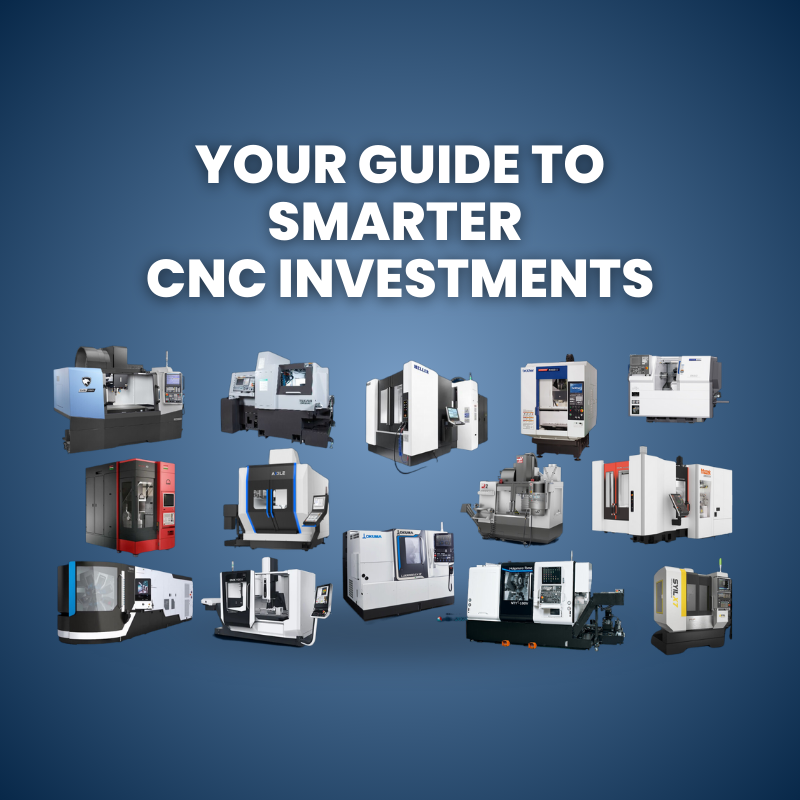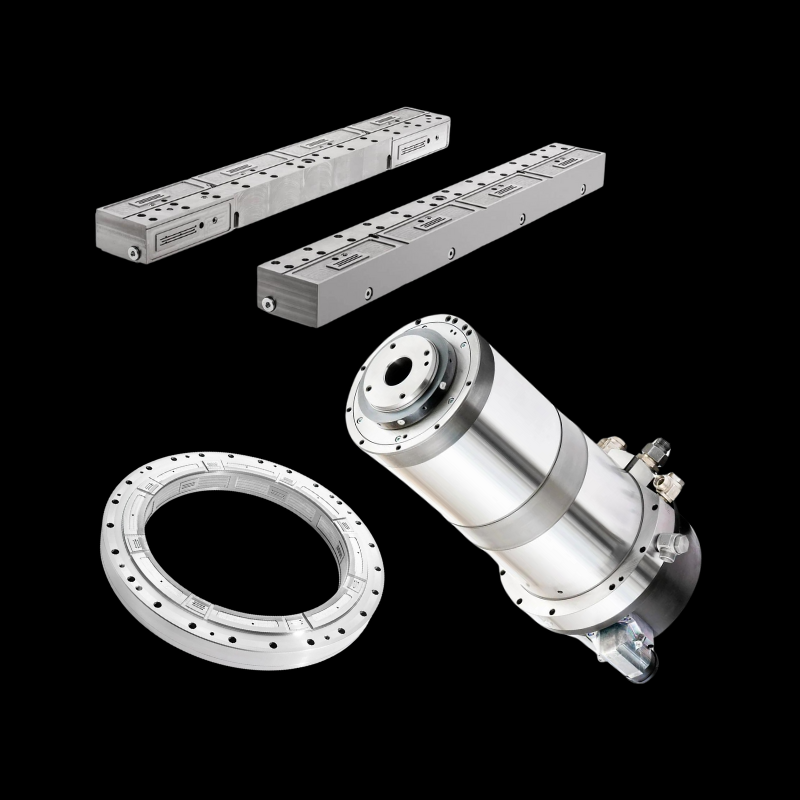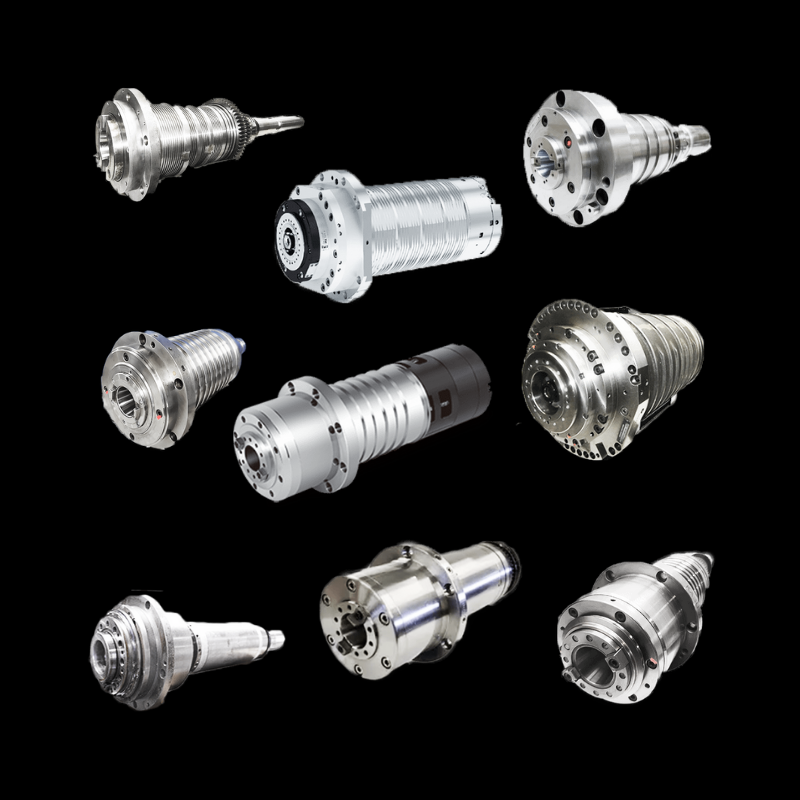Whether you're leaning towards bar feeders or contemplating gantry loaders, let’s look at a clear comparison to help you make an informed decision.
Bar feeders and gantry loaders serve to automate the loading process in CNC machining, but they cater to different needs. Bar feeders are ideal for long, continuous production runs with cylindrical materials, while gantry loaders offer flexibility for handling various shapes and sizes of workpieces.
Bar Feeders
Bar feeders are automated systems designed to feed bar stock into CNC machines. They are best suited for high-volume production runs where the use of cylindrical stock is common. The primary advantage of bar feeders is their ability to enable unattended or lightly attended operations, thereby increasing machine uptime and productivity. By continuously supplying material, they minimize downtime for loading and unloading, making them highly efficient for long production cycles.
Gantry Loaders
Gantry loaders offer a versatile solution for automating the loading and unloading process in CNC machining. Unlike bar feeders, gantry loaders can handle a wide variety of workpiece shapes and sizes. They are equipped with robotic arms and are often used in applications requiring more flexibility in material handling. Gantry loaders can be configured to serve multiple machines or workstations, making them a flexible option for shops with diverse machining tasks.
Comparing Efficiency and Flexibility
When comparing bar feeders and gantry loaders, it's essential to consider the specific needs of your operation. Bar feeders excel in environments where the primary focus is on long, uninterrupted runs of cylindrical parts. On the other hand, gantry loaders are more suitable for operations requiring the handling of different workpiece geometries or for setups where a single loader serves multiple machines.
Choosing Automation for Lights-Out: Bar Feeders or Gantry Loaders?
Embracing the concept of lights-out manufacturing requires a deep dive into the world of automation. Whether it's the continuous operation offered by bar feeders or the versatility of gantry loaders, understanding the strengths of each system is key.
For lights-out manufacturing, both bar feeders and gantry loaders are indispensable, yet their suitability depends on your specific needs. Bar feeders excel in continuous production of cylindrical parts, while gantry loaders offer flexibility for varied shapes and sizes, critical for diverse machining tasks.
Lights-Out Manufacturing Essentials
Lights-out manufacturing represents the zenith of automation, where machines operate unattended for extended periods, often overnight or during weekends. The goal is to maximize productivity and efficiency while minimizing labor costs. In this setting, choosing the right automation system—bar feeders for cylindrical workpieces or gantry loaders for diverse geometries—becomes crucial.
Bar Feeders for Continuous Operation: In lights-out settings, bar feeders shine by providing consistent, uninterrupted feed of bar stock into CNC lathes or turning centers. This ensures machines can run for hours without human intervention, making them ideal for long production runs of cylindrical parts.
Gantry Loaders for Flexibility: Gantry loaders, with their ability to handle a variety of workpiece shapes and sizes, bring unparalleled flexibility to lights-out operations. They are particularly valuable in shops that require the capability to switch between different types of jobs with minimal downtime.
Selecting the Right Bar Feeders & Gantry Loaders
The key to choosing between bar feeders and gantry loaders lies in understanding your production shop's specific requirements. Bar feeders are ideal for high-volume, repetitive work with round stock, while gantry loaders offer flexibility for varied shapes and sizes, perfect for shops with diverse machining tasks.
Assessing Your Production Needs
The first step in choosing the right automation tool is to thoroughly assess your production needs. Consider the types of parts you produce, the materials you use, and the volume of production. For shops focusing on long runs of cylindrical parts, bar feeders offer efficiency and the ability to run unattended for extended periods. Conversely, gantry loaders provide versatility, handling different sizes and shapes of parts, making them suitable for shops with a wide range of products.
Understanding Bar Feeders
Bar feeders automate the process of feeding bar stock into machines, making them a staple in many CNC turning centers. They significantly reduce manual labor and increase production speeds for round stock components. When choosing a bar feeder, consider factors such as bar diameter, length capacity, and the level of automation needed.
Exploring Gantry Loaders
Gantry loaders automate the loading and unloading of parts from CNC machines. They are characterized by their ability to handle various part sizes and shapes, offering a high degree of flexibility. When evaluating gantry loaders, look at their compatibility with your machines, payload capacity, and the types of movements they can perform.
Comparing Costs and ROI
Cost is a significant factor in deciding between bar feeders and gantry loaders. While initial investments may be high, the return on investment (ROI) should be carefully considered. Analyze the potential for increased production, reduced labor costs, and improved quality when making your choice.
How to Technically Compare Bar Feeders and Gantry Loaders
When it comes to equipping your production shop with the right automation tools, a deep technical understanding of bar feeders and gantry loaders is crucial. Both systems offer unique benefits, but knowing how to differentiate and compare them based on technical aspects will ensure you make the most informed decision. Comparing them involves evaluating factors like workpiece requirements, production volume, and automation level.
Technical Specifications of Bar Feeders and Gantry Loaders
Bar feeders typically have specifications related to bar diameter, length, and material compatibility. Key technical features include the feeder's magazine capacity, bar size range, and the type of feeding mechanism employed.
Gantry loaders are characterized by their payload capacity, reach, and the flexibility of their end effectors. Technical aspects such as the range of motion, speed, and the types of CNC machines they can serve are crucial for determining their suitability for your shop.
Operational Differences and Applications
Each system has its operational niche. Bar feeders excel in environments where long, uninterrupted runs of parts are common, requiring minimal setup changes. They are synonymous with efficiency in turning operations, especially for producing standard cylindrical components in large quantities.
Gantry loaders provide a broader range of applications due to their ability to handle different workpiece geometries. They are particularly valuable in settings where the production involves various part sizes and shapes, requiring frequent changes in the type of workpiece being processed.
Evaluating Production Needs and Machine Compatibility
Assessing your production needs involves considering the types of parts you manufacture, the volumes, and how these needs align with the capabilities of bar feeders and gantry loaders. Machine compatibility also plays a critical role, as the integration of either system should seamlessly fit into your existing setup without requiring extensive modifications.
Cost Consideration and Return on Investment
Understanding the cost implications and the potential ROI of each system is vital. While bar feeders might offer a quicker ROI in high-volume, repetitive production scenarios, gantry loaders could provide greater flexibility and efficiency gains across a wider range of applications, potentially offering a more strategic long-term investment.
Which is More Commonly Used Today?
Bar feeders are the most common form of automation for turning operations. This preference is largely due to their efficiency in continuously supplying bar stock into CNC machines, which is crucial for high-volume production environments where cylindrical parts are predominant. Bar feeders automate the feeding process, reducing manual labor and increasing productivity by allowing machines to run unattended for longer periods.
Choosing between bar feeders and gantry loaders ultimately depends on the specific needs of your production shop, including the types of parts you produce, the materials used, and your production volume. Bar feeders offer unparalleled efficiency for continuous production of cylindrical parts, making them a popular choice for shops focused on turning operations.
Gantry loaders, while perhaps less commonly used as the primary form of automation, provide significant value in environments that require flexibility in handling various shapes and sizes of workpieces, especially when serving multiple machines or requiring frequent setup changes.
For shops aiming to maximize efficiency in turning operations with cylindrical stock, bar feeders represent the most utilized automation tool. However, for those looking for versatility and the ability to handle a broader range of part geometries, gantry loaders offer a compelling alternative.




